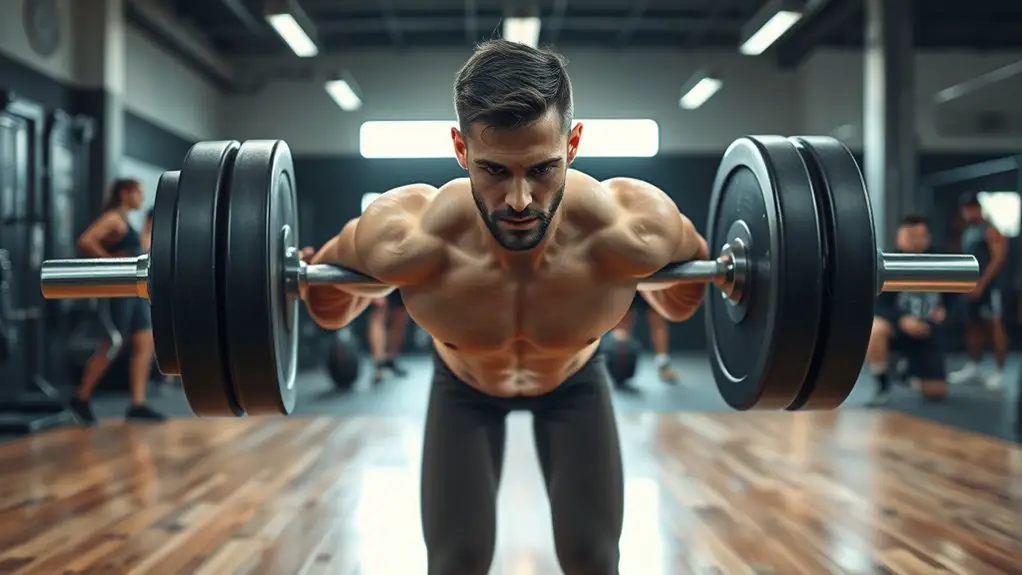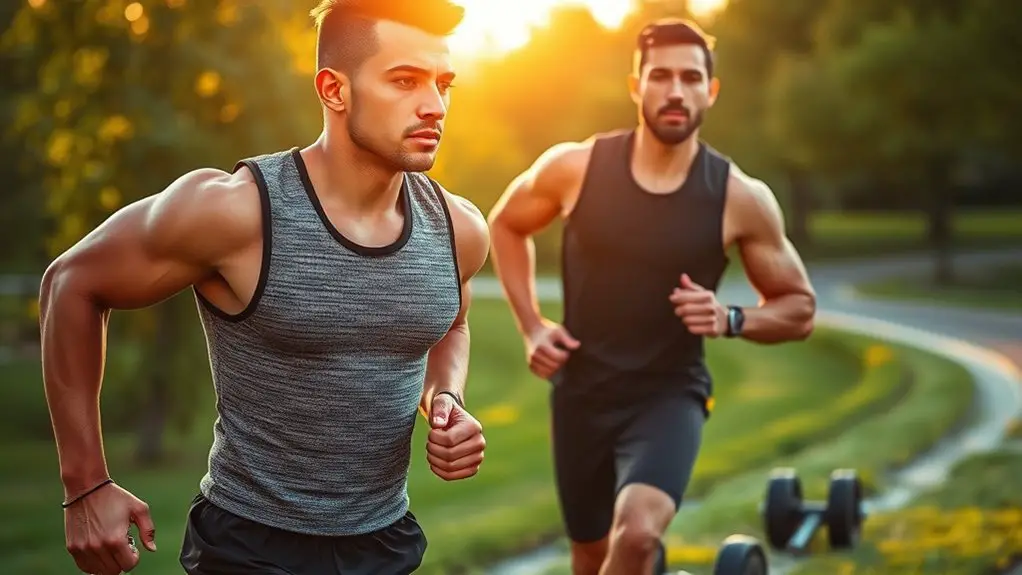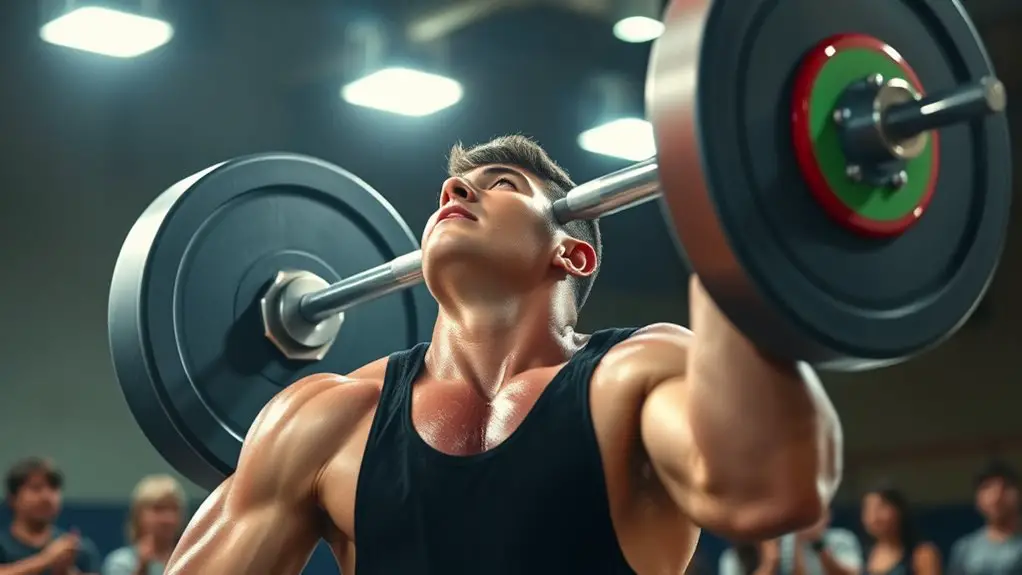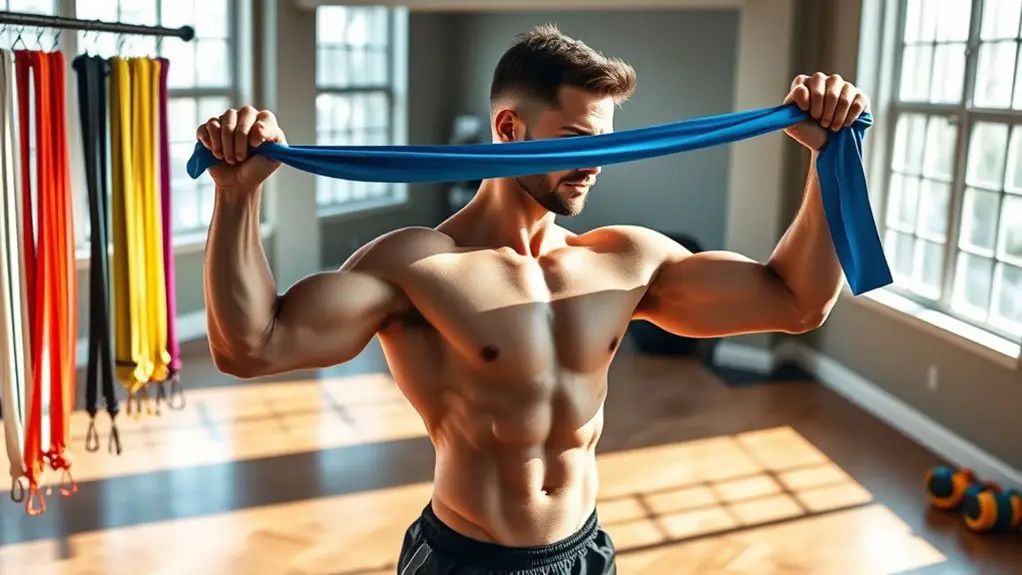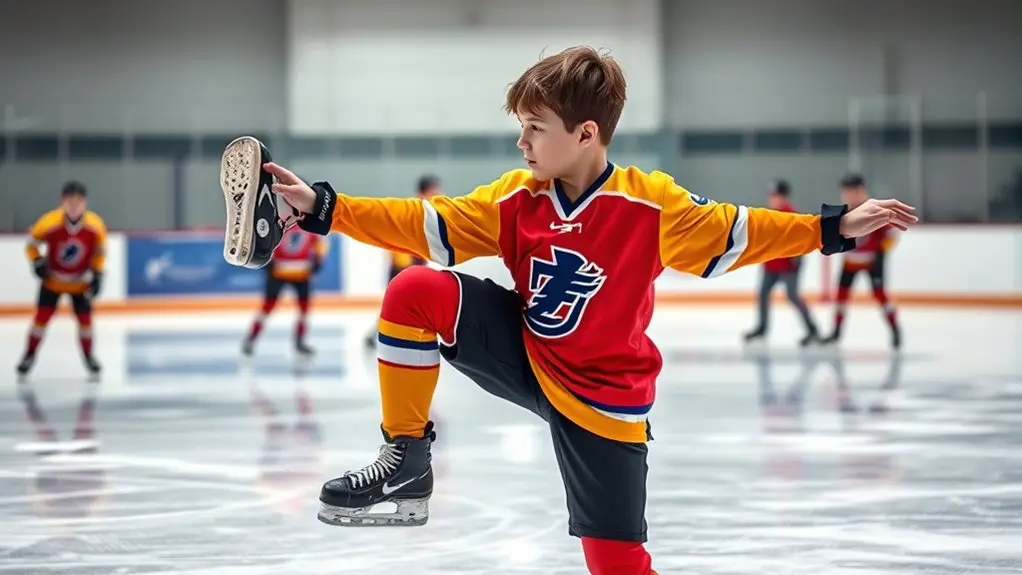Every athlete needs deadlifts in their routine because they build overall strength and improve stability essential for performance. By targeting muscles like the hamstrings, glutes, and lower back, deadlifts enhance power output and reduce the risk of injury. They also boost your mental toughness, helping you handle high-pressure situations. Plus, they mimic natural movements that occur in sports. If you want to discover more about the specific benefits and techniques, keep exploring.
The Benefits of Deadlifts for Athletic Performance
When you incorporate deadlifts into your training routine, you release a range of benefits that can greatly enhance your athletic performance. Deadlifts build overall strength, helping you lift heavier and move more efficiently. As you strengthen your core and lower body, you'll find improved stability and balance, essential for any sport. This foundational strength translates to better power output, allowing you to sprint faster, jump higher, and tackle with more intensity.
Deadlifts also promote functional movement patterns, mimicking actions you perform in your sport, which helps reduce the risk of injury. The mental toughness developed during heavy lifts can boost your confidence, pushing you to excel in high-pressure situations. Additionally, they engage multiple muscle groups, enhancing your overall power and stability which is crucial for athletic success.
Incorporating deadlifts isn't just about physical gains; it's about embracing the freedom to perform at your best. So, if you're serious about reaching new heights in your athletic journey, make deadlifts a priority in your training.
Key Muscles Targeted by Deadlifts
Here's a quick breakdown of the primary muscles at play:
| Muscle Group | Function |
|---|---|
| Hamstrings | Extend the hip, flex the knee |
| Glutes | Hip extension, power generation |
| Lower Back (Erectors) | Spinal stability, posture control |
Engaging these muscle groups through deadlifts not only enhances strength but also contributes to overall core strength, which is crucial for athletic performance.
Enhancing Functional Strength and Stability
Deadlifts are a powerful tool for enhancing functional strength and stability, as they not only build muscle but also mimic the natural movement patterns required in various sports and daily activities. When you perform deadlifts, you engage multiple muscle groups, promoting coordination and overall balance. This translates to improved performance on the field or court, allowing you to move freely and efficiently.
Incorporating deadlifts into your routine helps you develop the strength needed for explosive movements, like sprinting, jumping, or changing direction quickly. You'll notice that your ability to lift, carry, or push during everyday activities also improves, giving you the freedom to enjoy life without limitations. Plus, deadlifts enhance your core stability, essential for maintaining control and posture in any physical endeavor. So, if you're looking to elevate your game and embrace your full potential, make deadlifts a staple in your training regimen. Additionally, they contribute to reducing injury risk, ensuring you can train consistently and perform at your best.
Deadlifts and Injury Prevention
As you incorporate deadlifts into your training routine, you'll find that they play an essential role in injury prevention. Deadlifts strengthen your posterior chain, which includes your glutes, hamstrings, and lower back. By building these muscles, you create a sturdy foundation that supports your entire body, reducing the risk of injuries during other athletic activities.
Additionally, deadlifts promote better posture and body mechanics. When you learn to lift correctly, you develop awareness of your body's alignment, helping you avoid awkward movements that can lead to strains or sprains.
Moreover, incorporating deadlifts can enhance your overall resilience. A stronger body is more capable of handling the stresses of intense training or competition, allowing you to perform at your best without the fear of injury holding you back. Furthermore, proper warm-ups and stretching techniques before your workout can significantly reduce the likelihood of overexertion injuries. So, embrace deadlifts; they'll empower you to move freely and confidently in your athletic pursuits.
Tips for Proper Deadlift Technique
When you're ready to master the deadlift, focusing on proper technique is essential for maximizing benefits and minimizing injury risk. Start by positioning your feet shoulder-width apart, with your toes slightly pointed out. Grip the bar just outside your legs, keeping your arms straight. As you begin, hinge at your hips, lowering your chest while maintaining a flat back. Your core should be tight, and your shoulders should be pulled back.
As you lift, push through your heels, driving your hips forward while keeping the bar close to your body. Avoid jerking the weight; instead, use a controlled motion. At the top, stand tall but don't lean back excessively. Always lower the bar with the same care you used to lift it, hinging at the hips once more. Practicing these tips will help you build strength and confidence, giving you the freedom to excel in your athletic pursuits. Additionally, incorporating exercises to enhance grip strength can lead to improved performance in deadlifts and other lifts.
Frequently Asked Questions
Can Beginners Safely Incorporate Deadlifts Into Their Training?
Yes, beginners can safely incorporate deadlifts into their training by starting with lighter weights, focusing on proper form, and gradually increasing resistance. It's crucial to listen to your body and avoid pushing too hard too soon.
How Often Should Athletes Perform Deadlifts Each Week?
Think of deadlifts as the anchor of your training ship. You should aim to perform them two to three times a week, allowing your body to adapt while still giving it the freedom to recover.
Are There Any Alternatives to Deadlifts for Athletes?
Absolutely, you can try alternatives like squats, kettlebell swings, or hip thrusts. These exercises target similar muscle groups and can complement your training while providing variety to keep things fresh and enjoyable.
What Equipment Is Needed for Deadlifting?
For deadlifting, you'll need a barbell and weights, plus a flat surface. If you want extra support, consider using lifting straps or a weightlifting belt. Always prioritize safety and proper form to prevent injury.
How Can Deadlifts Fit Into Sport-Specific Training?
Imagine a powerful lion, muscles rippling as it leaps. Deadlifts can boost your strength and explosiveness, enhancing sport-specific skills. They'll ground you, giving you the freedom to soar in your athletic pursuits.
